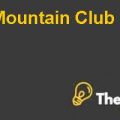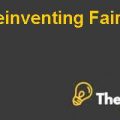
Target Market Analysis
Customers Segments
Contract Manufactures: Supply OEM’s Manufacturers
- Industrial computer systems
- Product circuit boards
Target Market Requirements
- Smooth supply chain management
- Value added services
- Quick Delivery
- Engineering support
- Relatively competitive cost and quality
Target Group: Corporate, SMEs and electronics manufacturers.
Segment: Enterprise computing solutions and Electronic components.
Marketing Strategy
Marketing Mix
Product
Their product line was based on two chip categories: standardized and proprietary. These both categories were remarkably famous in the manufacturing industry. The best thing about the standardized chips was that these were interchangeable and also produced by various suppliers. As far as the proprietary category is concerned, it was manufactured by a single supplier. Moreover, only authorized franchised distributors could sell these standardized or proprietary products to suppliers. Altera which possesses specialty in production of proprietary programmable logic devices (PLDs) was the biggest supplier of Arrow Electronics. These manufacturing of proprietary programmable logic devices requires extensive value-added programming (Caldwell, 2003). Since it was quite typical in the industry, therefore the manufacturer didn’t attempt for any other programming virtually. Approximately 20% of Altera’s products were bought directly by customers who possess in house programming skills. Altera sold the outstanding 80% through two major franchised distributors who were quite proficient in providing the exceptional value-added programming required by each and every individual customer. Another large Arrow Electronic supplier, Intel, also supplied proprietary semiconductor and related diversified range of products, thought’s most popular line, the x86 chip, did not require the level of value-added programming and engineering provision that Arrow Electronic usually provided for Altera’s PLDs. Additionally the Motorola and Texas Instruments, the remaining two of Arrow Electronics “big four,” somehow balanced the line card by selling a 75/25 mixture of proprietary and standardized products. Arrow Electronics has an excellent portfolio of products that vary in the amount of value added by Arrow Electronics. Arrow Electronics uses a range of these value-added items such as highly programmable logic chips as "loss leaders" in order to retain and most importantly acquire a new customer. It actually makes money when it sells the Commodity or low value-added products to the similar customer. They have a well-established brand name across the globe. Their presence in approximately 80 countries and their territories further strengthen their brand name in real optimistic manner. High product portfolio, which is one of the broadest in this product category represents their solid strength. There complete product categories are as follows.
Price
Now the element of pricing is becoming a matter which needs to be brought into consideration because of the Internet Express, internet based trading system. President of the Arrow/Schweber (A/S) group added while discussing the proposal that they need to know three vital elements which play a crucial role. First how the value is created for our potential customers in association with the price, secondly, how this value which they offer is dissimilar from our competitor and the last but most important is that the weather this new service from express can be beneficial for customers in terms of price and the same value. He added that they have a successful business model, which is based on the handsome product portfolio.
Moreover it is suggested that they must not ignore the proposal of express and at least go for detailed cost benefit analysis. At this stage it can be said that the price has a real role to play and the recommended strategy is the price penetration strategy. Since this system is new to this strategy can help them to gain exceptional market share by maintaining similar quality at any cost which is the real key to win the war in this regard.
Placement
It was quite common for both the electronic and semiconductor component manufacturers such as Motorola and Intel to deal straight away with relatively large original equipment manufacturers (OEMs). Placement in this regard has a very limited role to play because typically, sales to such customers accounted for approximately 75% of the suppliers’ sales. Suppliers licensed relatively small numbers of distributors such as Arrow Electronics to accomplish sales goals towards the remaining customers in a way that they could not serve directly, whether due to diminutive size or broad service requirements. There was no doubt that Arrow Electronics was a broad-line distributor of these electronic parts, including passive and semiconductors components. Under the leadership of Mr. Stephen Kaufman, who became president back in 1982 and CEO in 1986, Arrow once more began to rise, reaching at the number one position in the middle of these potential electronics distributors by 1992.As far as the relationship with suppliers are concerned, there were two demands or basis which needs to be fulfilled. First demand was that they want us to attract more and more business in the standardized product category, so ...............
This is just a sample partial case solution. Please place the order on the website to order your own originally done case solution.













